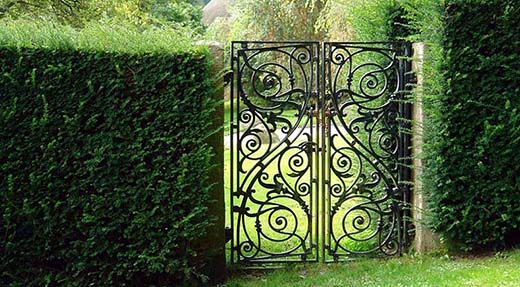The Gates of Worship
September 22, 2016
|


Enter his gates with thanksgiving and his courts with praise; give thanks to him and praise his name.—Psalm 100:4
When you enter some of the greatest cities in the world, you can encounter famous gates such as the Brandenburg Gate (Berlin), the Jaffa Gate (Jerusalem), and the gates at Downing Street (London). Whether the gates were built for defensive or ceremonial purposes, they all represent the difference between being outside or inside certain areas of the city. Some are open; some are closed to all but a few.
The gates into the presence of God are always open. The familiar song of Psalm 100 is an invitation for the Israelites to enter into the presence of God through the temple gates. They were told to “shout for joy” and “come before him with joyful songs” (vv. 1-2). Shouting for joy was an appropriate expression when greeting a monarch in the ancient world. All the earth was to sing joyfully about God! The reason for this joyful noise was that God had given them their identity (v. 3). They entered the gates with praise and thanksgiving because of God’s goodness and His steadfast and enduring love which continues through all generations (vv. 4-5). Even when they forgot their identity and wandered away from Him, God remained faithful and still invited them to enter His presence.
The gates into God’s presence are still open, inviting us to come and worship. —Marvin Williams
What should motivate us to worship God? What statement of praise could you give to God today?
The gates into the presence of God are always open.
INSIGHT: Psalm 100 is poetry packed with image-rich language. When the psalmist says we are the Lord’s, this reminds us of His creative and redeeming work. The Bible tells us that if we have faith in Christ, we are His in at least two ways: We are His because He created us (Gen. 1:26-31) and because He has adopted us as His family (Eph. 1:5). The psalmist also uses the image of a sheep. We are “the sheep of His pasture.” We belong to Him and can enter His gates because we are under His care. Jesus Himself uses this image of sheep and gates in John 10:7-9 when explaining what it means to be saved.
|

No comments:
Post a Comment